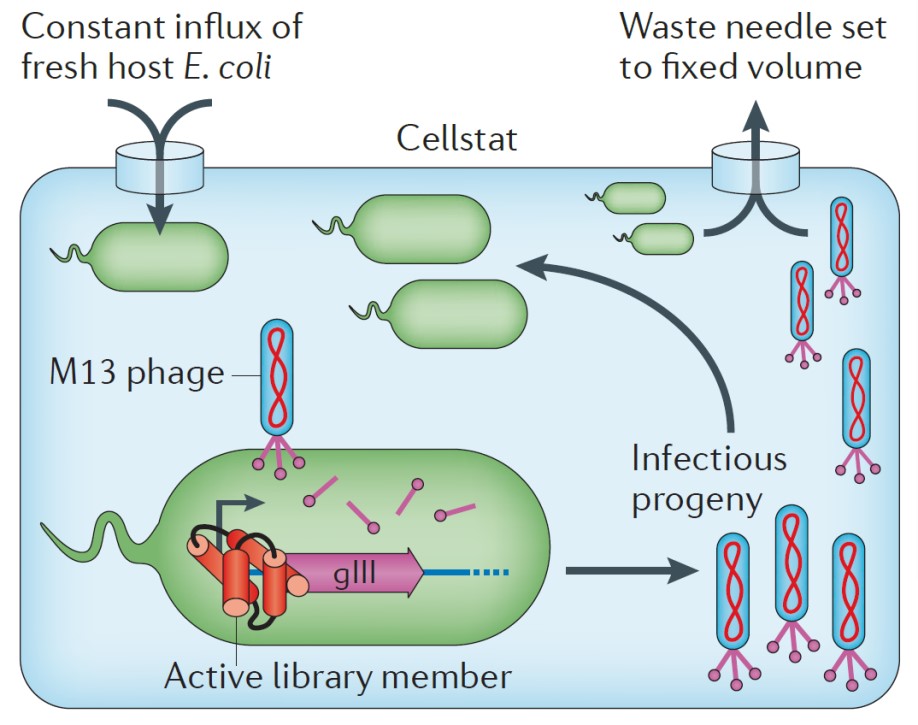Phage-Assisted Continuous Evolution
Creative Biostructure now can provide the advanced custom phage-assisted continuous evolution service for researches in the field of protein evolution and engineering.
Continuous evolution methods are developed recently to overcome some disadvantages of traditional protein evolution methods such as the requirements for discrete time- and labor- intensive steps during the construction and introduction of gene libraries, screening and selections, isolation of gene library members, etc. In continuous evolution methods, every steps of a protein evolution cycle can be performed continuously with no need for manual intervention. Most of the continuous evolution experiments have selected for replicative fitness of hosts under a continuous dilution, and have been applied for various evolution targets such as bacteria genomes for faster replication speed and resistance to antibiotics. The continuous evolution methods significantly improve the efficiency of protein evolution assays, along with the number of steps in the sequence space that can be explored in the screening for desired optimal protein variants.

Fig.1 Phage-assisted continuous evolution (Michael S. Packer and David R. Liu. Nature, 2015)
The phage-assisted continuous evolution (PACE) is one of the most advanced continuous evolution methods. In a phage-assisted continuous evolution assay, the evolving gene will be inserted into a certain bacteriophage genome in place of an essential phage gene, and the evolving gene controls the expression of this essential phage gene in an accessory plasmid instead. The evolving gene then will be transferred from host cell to host cell through this modified bacteriophage life cycle. If the specific phage encodes an active library member, the essential phage gene will be expressed successfully. By this way, only those phages that with the essential phage gene expressed are infectious and can continue perform the infection and replication in fresh host cells that dilute the vessel.
With state-of-art PACE platforms and reliable protein evolution and engineering science teams, Creative Biostructure now can provide our customers the advanced custom PACE service for protein evolution and engineering applications. The PACE has a continuous nature. When combined with in vivo mutagenesis, PACE can achieve dozens of evolution cycle of selection, mutation and replication without human intervention in a single day, and several hundreds of evolution cycles in a week. We will use the expression of chosen essential phage genes that are trigged by the desired protein as reporters. Limited by the titre of phages, the library size for PACE can be up to a level of 108-1012.
Creative Biostructure also provides other various custom protein evolution and engineering services to save your money and timeline with high-quality experiment results. Welcome to contact us for more details.
Reference:
Packer, Michael S., and David R. Liu. "Methods for the directed evolution of proteins." Nature Reviews Genetics 16.7 (2015): 379-394.
Dickinson, Bryan C., et al. "Experimental interrogation of the path dependence and stochasticity of protein evolution using phage-assisted continuous evolution." Proceedings of the National Academy of Sciences 110.22 (2013): 9007-9012.
Cobb, Ryan E., Tong Si, and Huimin Zhao. "Directed evolution: an evolving and enabling synthetic biology tool." Current opinion in chemical biology 16.3 (2012): 285-291.